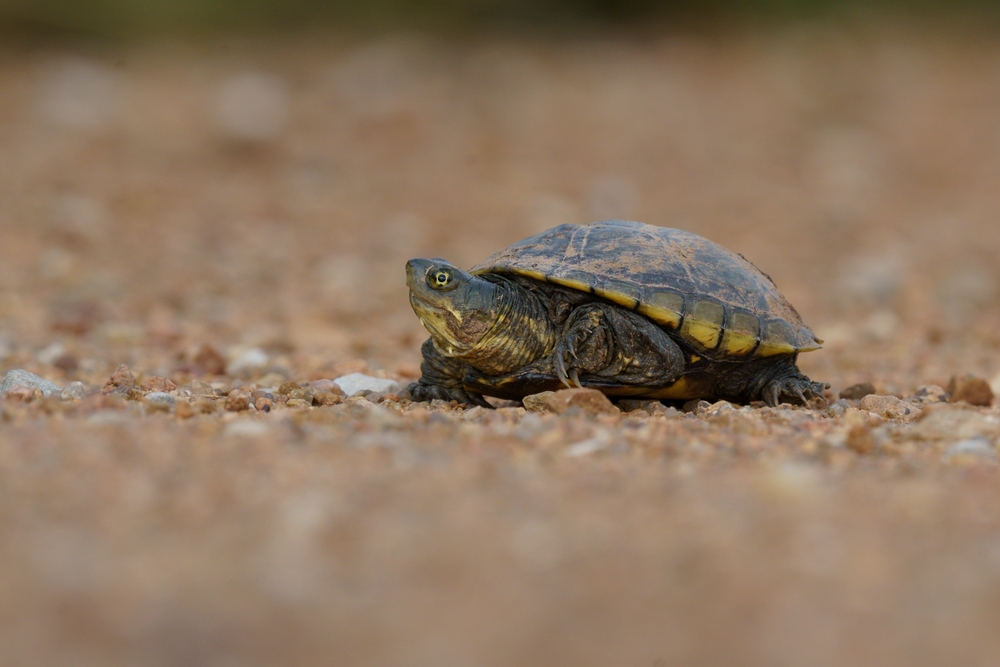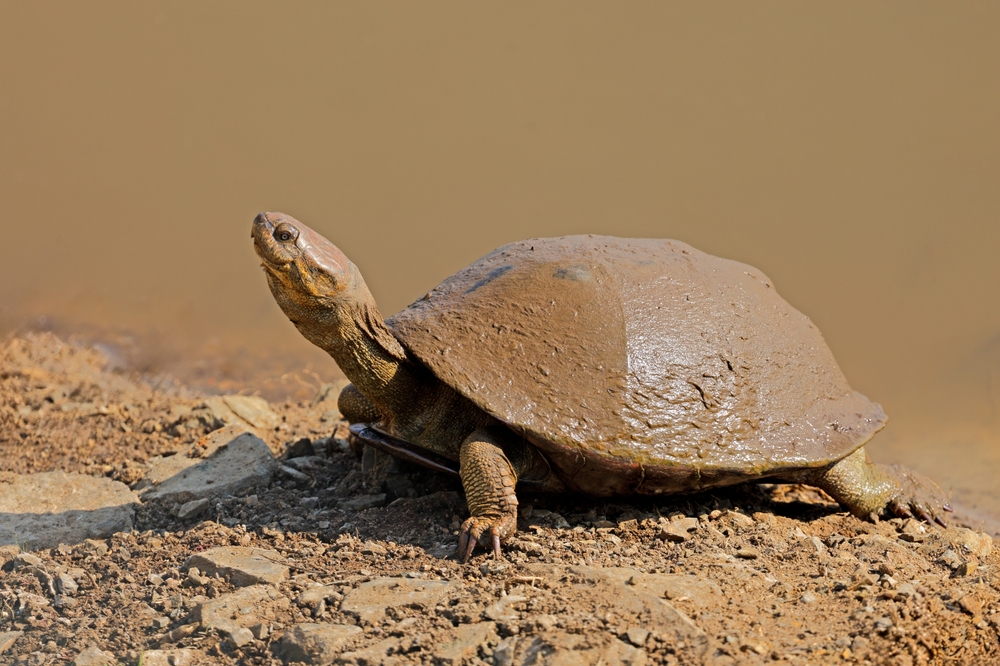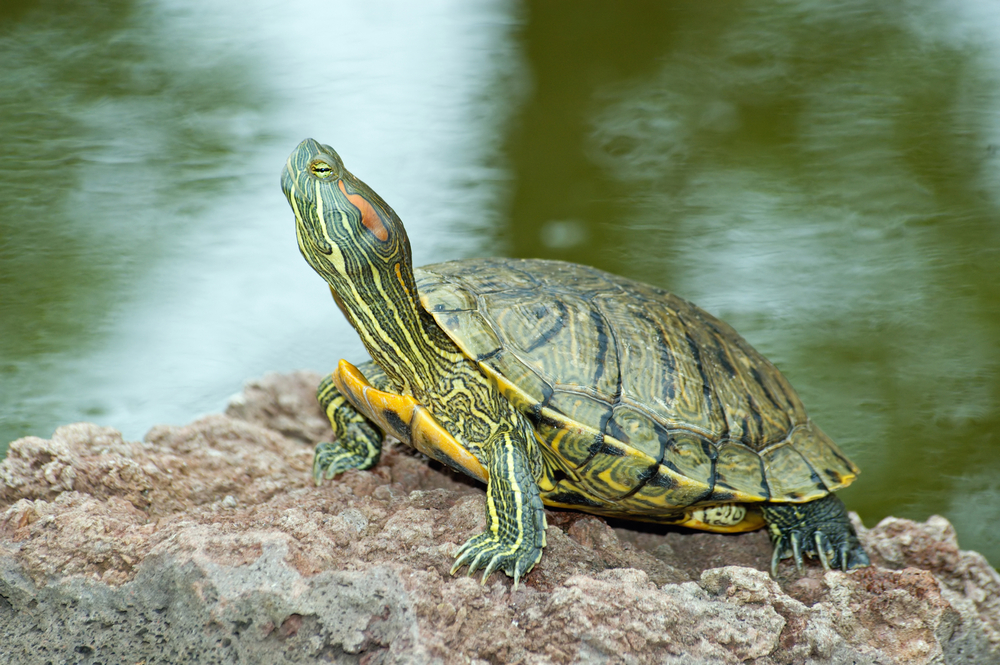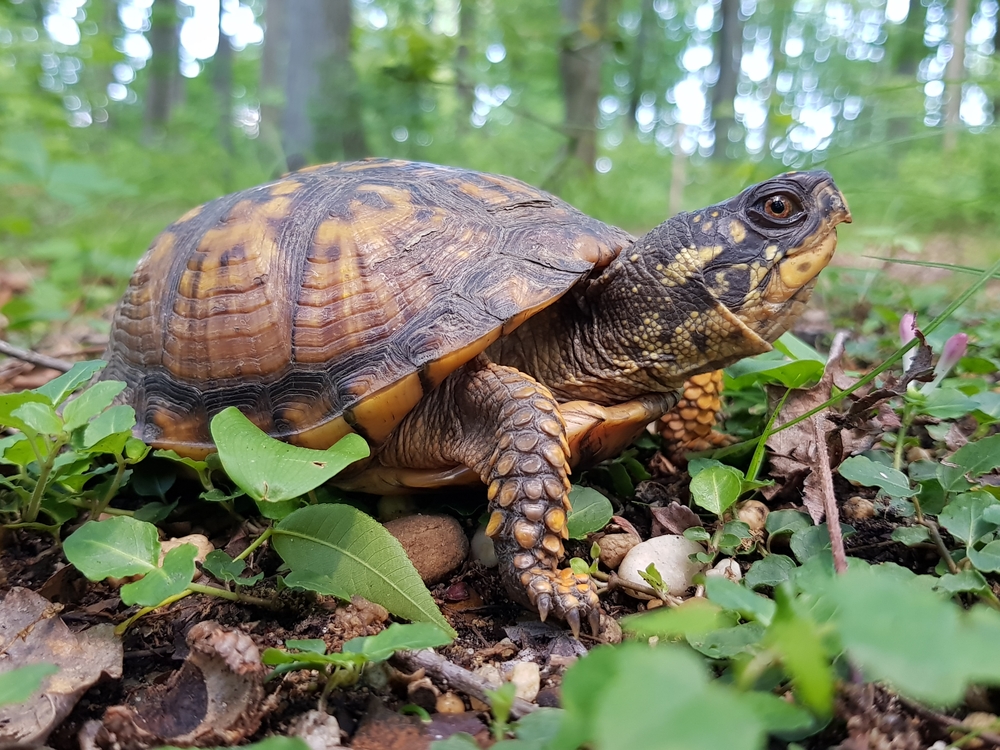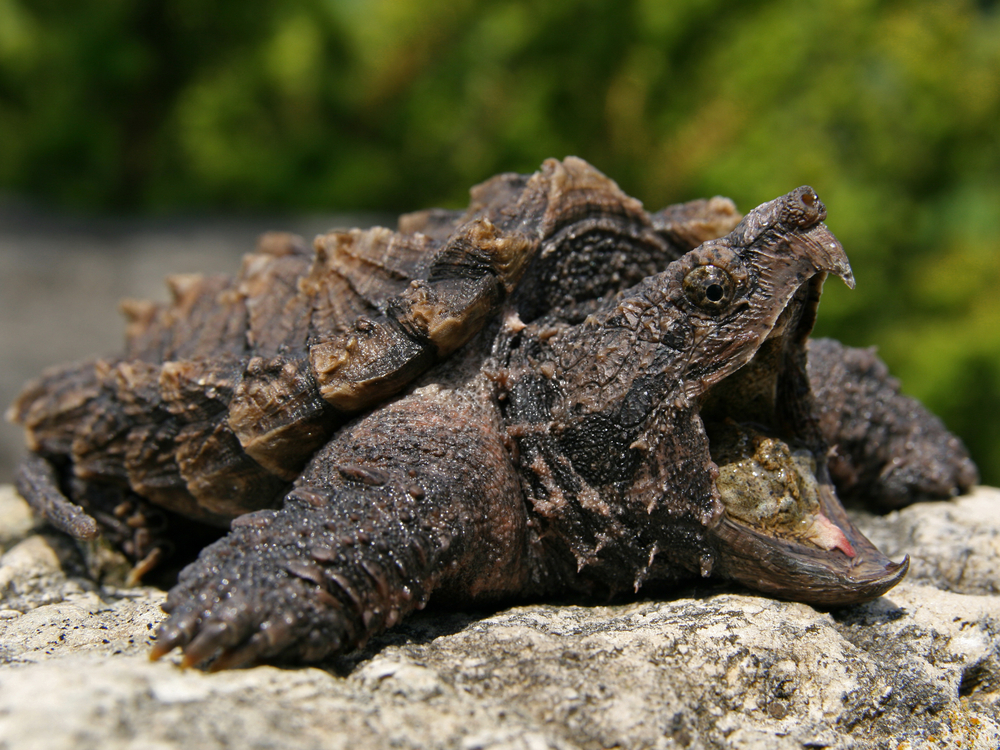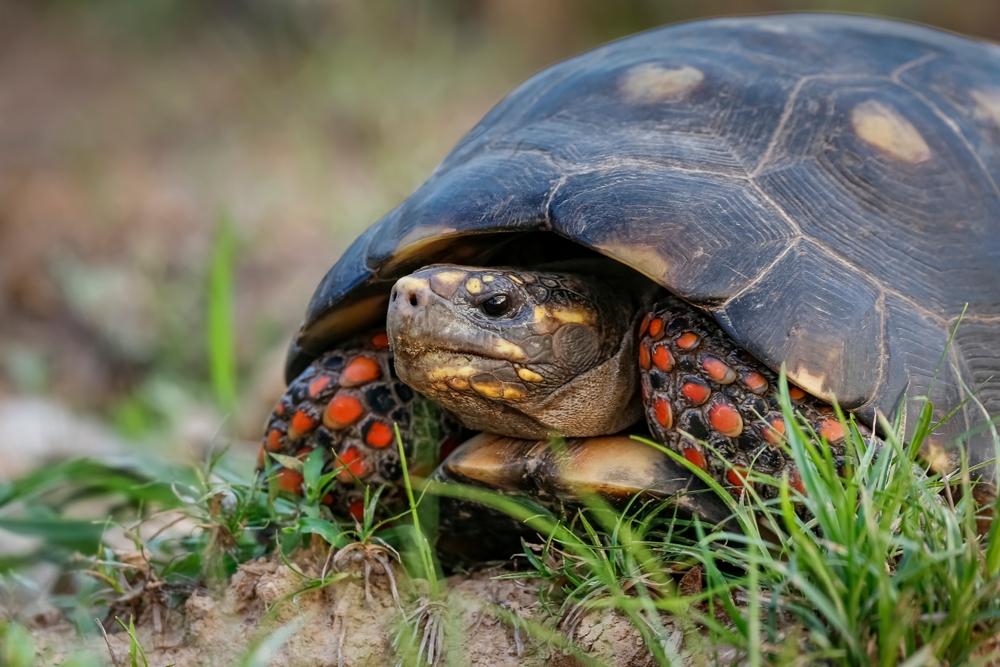About
Mud turtles are small, bottom-dwelling freshwater turtles found throughout North, Central, and parts of South America, inhabiting shallow ponds, swamps, marshes, and slow-moving rivers. Belonging to the genus Kinosternon, these turtles are known for their adaptability, secretive habits, and ability to withstand dry conditions by burrowing into mud—hence their name.
Most species are compact in size, with adults typically reaching 10–15 cm (4–6 inches) in shell length. Their oval, domed carapace is usually brown, olive, or black and may appear smooth or slightly ridged depending on the species. The plastron (bottom shell) is well-developed with two movable hinges, allowing them to close their shell tightly—a trait that offers enhanced protection against predators.
Mud turtles are omnivorous, feeding on aquatic invertebrates (insects, snails, worms), small fish, carrion, algae, and various aquatic plants. They forage actively along the bottom of their habitats and often stir up sediment in search of food.
These turtles are mostly aquatic but may venture onto land, especially during rainy seasons or when searching for nesting sites. In drier regions or during droughts, many species are capable of aestivation, burying themselves in mud to survive periods of dehydration and heat.
Reproduction is oviparous, with females laying 1–8 eggs, usually in shallow nests near water bodies. Hatchlings emerge after a few months and are fully independent.
Notable species include the Eastern mud turtle (Kinosternon subrubrum), Yellow mud turtle (K. flavescens), and Stripe-necked mud turtle (K. baurii). Most mud turtles are not considered endangered, though habitat loss and water pollution pose threats in some regions.
Mud turtles belong to the genus Kinosternon in the family Kinosternidae.
Physical Characteristics
Shell:
Mud turtles, particularly species in the genus Kinosternon, have a smooth, domed carapace that is typically olive, brown, or black in color, often with subtle patterning or a matte finish. The plastron (bottom shell) is relatively large and features two hinges, allowing the turtle to close its shell tightly for defense—a distinctive trait among small freshwater turtles.
Head and Neck:
The head is relatively large and triangular, with a blunt snout and sharp, curved beak. Skin coloration ranges from gray to olive, often with yellow or cream-colored stripes or spots. The neck is short but flexible and allows for easy withdrawal under the hinged plastron.
Limbs:
Mud turtles have short, sturdy legs with webbed feet and strong claws, well-adapted for walking on land and maneuvering in muddy or shallow aquatic environments. Their limbs are scaled and often match the shell in coloration.
Tail:
The tail is short in females but long and thick in males, sometimes tipped with a horny spine. Tail size and shape are useful for distinguishing between sexes.
Size:
-
Length: Most adult mud turtles measure 3 to 6 in (7.5 to 15 cm) in carapace length.
-
Weight: They typically weigh between 0.5 to 1.5 lbs (0.2 to 0.7 kg), depending on species and age.
Sexual Dimorphism:
Males often have longer tails, a more concave plastron, and smaller overall body size compared to females. Females tend to have wider, rounder shells to accommodate egg-laying.
Mud turtles are compact, well-armored reptiles with physical adaptations for life in shallow, muddy waters. Their ability to tightly close their shell makes them well-defended despite their small size.
Reproduction
Mating Behavior:
Mud turtles are typically solitary, coming together only to breed. Mating usually occurs in spring and early summer, often triggered by warmer temperatures and increased rainfall. Males may nudge or follow females underwater, using tactile and chemical cues to initiate courtship.
Copulation:
Mating occurs in shallow water. The male mounts the female and grips her with his claws during copulation, which may last several minutes. Males often show increased aggression during the breeding season, especially toward other males.
Nesting and Egg Laying:
After mating, females leave the water to find soft, sandy or loamy soil in which to dig a nest.
-
Clutch Size: Most mud turtles lay 2 to 8 eggs per clutch, depending on species and size. Some may lay multiple clutches per season.
-
Egg Shape and Size: Eggs are elongated and white, measuring about 1 to 1.5 in (2.5 to 3.8 cm) in length.
Incubation:
-
Duration: Incubation typically lasts 70 to 100 days, depending on species and ambient temperature.
-
In some species, eggs may overwinter and hatch the following spring if laid late in the season.
Hatchlings:
Young turtles are fully independent upon hatching.
-
Size at Birth: Hatchlings are about 1 in (2.5 cm) in carapace length.
-
They resemble miniature adults, though with slightly softer shells that harden as they age.
Maturity:
Mud turtles generally reach sexual maturity between 4 to 8 years of age, with females maturing slightly later than males.
Mud turtles’ reproductive strategies—small clutch sizes, multiple clutches, and delayed hatching—allow them to adapt to seasonally variable wetland environments, helping to maintain population stability across North and Central America.
Lifespan
Lifespan in the Wild:
Mud turtles typically live 15 to 30 years in the wild, depending on species, habitat quality, and predation pressure. Their small size makes hatchlings especially vulnerable, but adults are well protected by their hinged shells and low activity levels.
Lifespan in Captivity:
With proper care, mud turtles often live longer in captivity due to stable environments, regular feeding, and veterinary support.
-
Average Captive Lifespan: 30 to 40 years
-
Some individuals have been recorded living over 50 years in zoos or long-term private care.
Threats to Longevity:
-
Habitat Loss: Draining of wetlands and pollution disrupt the seasonal water cycles that mud turtles depend on.
-
Predation: Eggs and hatchlings are vulnerable to raccoons, birds, snakes, and fish.
-
Road Mortality: Nesting females often cross roads in search of suitable nesting sites and are at risk of being hit by vehicles.
-
Pet Trade and Handling Stress: While hardy, wild-caught turtles often suffer stress and shorter lifespans in captivity if not properly cared for.
Mud turtles’ ability to burrow and aestivate during droughts, their hinged shells, and their generalist diets contribute to their survival in unpredictable environments. Conservation of wetlands and mitigation of road-related mortality are key to supporting their longevity in the wild.
Eating Habits
Diet:
Mud turtles are omnivorous, though they lean heavily toward carnivory, especially in the wild.
-
Animal Matter: Their primary foods include insects, worms, snails, small fish, tadpoles, and crustaceans.
-
Plant Material: They also consume aquatic plants, algae, and decaying vegetation, especially when animal prey is scarce.
Feeding Behavior:
-
Mud turtles are bottom-dwellers, foraging along the muddy bottoms of ponds, streams, and marshes.
-
They use chemical cues and touch to locate prey in murky water.
-
Their sharp beaks allow them to tear apart soft-bodied prey or crush shelled organisms like snails.
Foraging Times:
-
Most species are diurnal, feeding during the day, though some may become crepuscular or even nocturnal during hot or dry periods.
-
They are opportunistic feeders and will eat a wide variety of food sources depending on seasonal availability.
Adaptations for Feeding:
-
Their low metabolic rate and generalist diet help them survive in temporary or nutrient-poor aquatic environments.
-
They can tolerate stagnant or muddy water and may aestivate in the mud during droughts, reducing the need for food.
Captive Diet:
In captivity, a balanced diet includes earthworms, aquatic insects, commercial turtle pellets, and occasional greens or fruits. Protein-rich foods should be moderated to avoid obesity and shell deformities.
Mud turtles’ versatile and opportunistic feeding habits make them highly adaptable to seasonal and shifting environments, contributing to their success across a broad range of wetland ecosystems in the Americas.
Uniqueness
Hinged Shell for Defense:
One of the mud turtle’s most distinctive traits is its double-hinged plastron, which allows it to close its shell tightly at both ends. This defensive adaptation is especially effective against predators and is unusual among small freshwater turtles.
Compact Size, Big Resilience:
Despite their small size, mud turtles are remarkably tough and adaptable. They thrive in shallow, muddy, slow-moving waters, often in environments that dry up seasonally. Their small size helps them hide in vegetation and debris, avoiding detection.
Aestivation Abilities:
Mud turtles are capable of aestivation—a dormant state entered during dry periods. They burrow into mud or leaf litter and reduce their metabolic rate, allowing them to survive droughts or harsh conditions for weeks or even months.
Wide Geographic Range:
Mud turtles inhabit a broad range across North, Central, and parts of South America, with species adapted to both temperate and tropical climates. This widespread success is due to their generalist diet, tolerance for poor water quality, and ability to survive environmental extremes.
Behavioral Boldness:
Unlike some shy turtle species, mud turtles can be surprisingly bold and active, especially in captivity. They are known to be curious and alert, and are frequently seen walking overland during rain in search of new habitat or nesting sites.
Strong Survival Instincts:
Mud turtles demonstrate excellent predator avoidance behaviors, including rapid burrowing, tightly closing their shells, and freezing in place. Their physical and behavioral defenses contribute to their long-term survival in ecosystems shared with larger predators.
The mud turtle’s hinged shell, aestivation capability, and adaptability to harsh, shallow, or seasonal wetlands make it a truly unique and resilient member of the turtle world.



































































